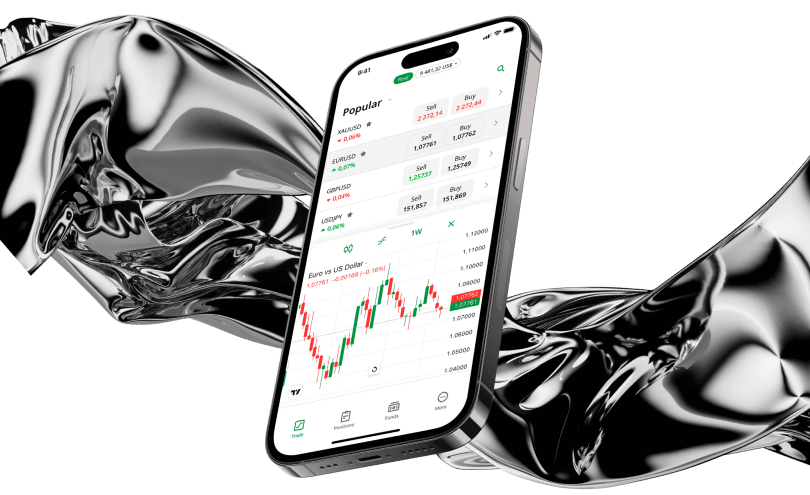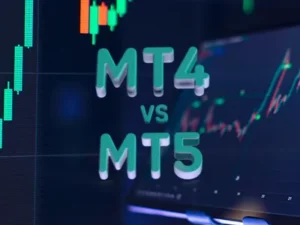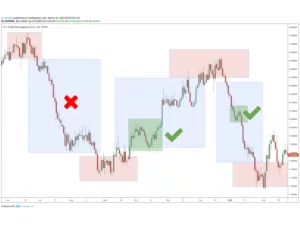Today nearly every serious trader uses a smartphone to access both forex and crypto markets. You can open an app, check a price chart, place an order, monitor your risk—all while you’re commuting, waiting for a meeting or at home. The advantage is obvious: you don’t need to be at a desktop setup to act when opportunities appear. But mobile trading also brings specific challenges: smaller screen size, different controls, less space for charting and analysis, and sometimes slower decision-making. To trade smartly you need to pick the right platform and treat your mobile device as a genuine tool—not a toy.
Imagine you have developed a simple strategy: trade forex pairs when the short-term moving average crosses above a longer-term one, and simultaneously monitor a crypto asset when it breaks a recent high on volume. Using a mobile app you log in, scan your watch-list of 3-5 instruments, set alerts for the cross and the break, place your orders with defined stop-loss and profit-target. You treat the mobile platform just like you would your desktop: same risk per trade, same journal of entries and exits. Over a week you record how many trades triggered and how they performed. That hands-on practice helps you understand whether you can rely on executing and managing trades effectively from your phone.
Why Mobile Trading Platforms Matter
What mobile platforms bring to the table
Mobile platforms let you trade whenever you see something happen—not hours later when you get back to your computer. Real-time price feeds, one-tap orders, notifications of major events or levels all mean you can act faster. Many apps now include charting tools, technical indicators and even news feeds. According to reviews, the trend toward mobile trading has grown strongly.
What you need to keep in mind
But using mobile means you must adapt: screen real-estate is limited; multiple windows are harder to manage; placing complex orders (e.g., limit plus stop) sometimes requires more taps. Execution speed and connectivity matter a lot—if you rely solely on WiFi or a weak mobile network, your app may lag and cost you trades. Ensure your platform’s mobile version offers fast execution, responsive charts and robust account-management features (deposits, withdrawals, support).
Key Features to Look For
When your account and funds are mobile-accessible, security must be a priority. Look for biometric login (fingerprint or face), two-factor authentication (2FA), encryption of data and strong regulatory backing. For crypto trading especially, features like cold-storage custody or clear withdrawal safeguards matter.
A good mobile trading platform supports both forex and crypto if you intend to trade both. That means currency pairs, major and minor; for crypto, access to top coins (Bitcoin, Ethereum) and ideally altcoins. Check fees and spreads: Forex spreads, crypto transaction fees and commissions vary widely. Also ensure the app supports advanced orders (limit, stop-loss, market) so you can manage risk.
Popular Platforms Worth Considering
Mobile apps for forex
Many forex brokers offer mobile versions of flagship platforms (e.g., MetaTrader 4/5). These include full charting, multiple timeframes, indicators and trade execution. For example:
- The MT4/MT5 mobile apps are widely used by traders because they bring the desktop features to mobile.
- Some brokers also built proprietary mobile apps tailored for smartphone use—lighter interface, optimized layouts.
Mobile apps for crypto trading
Crypto-specific apps now rival full trading platforms. For instance:
- Apps like those reviewed let you buy, sell, stake, trade futures or spot crypto and monitor price action on mobile.
- Choose apps that allow both simple buy/hold and advanced trading modes (order book, margin, futures) if your style requires that.
Practical Setup and Workflow
Begin by downloading the app of your chosen broker or exchange. Log in securely, enable 2FA, set up a watch-list of instruments you plan to monitor (maybe 2-3 forex pairs + 1-2 crypto coins). Configure notifications: e.g., when a pair moves by “x” pips, or when a coin crosses a threshold. Make sure chart layouts are readable on your phone: set preferred time-frames (15 min, 1 hour) and favourite indicators (perhaps RSI, moving averages).
Each morning (or start of trading day) open the app and review your watch-list. Look at recent price movements, support/resistance levels. If a predefined alert triggers, check whether your entry conditions are met. Place your trade with defined stop-loss and take-profit on mobile. Later in the session (or day end) open your journal (could be a simple spreadsheet or app note) and record each trade: time, instrument, entry, stop, target, outcome. At week’s end review: win percentage, average profit vs loss, did mobile execution delay you, did you miss opportunities because of limited screen space? Adjust your mobile workflow accordingly.
Risk Management and Mobile Challenges
Even when on mobile, the risk management rules do not change. Decide your risk per trade (for example 1 % of your capital), set your stop-loss accordingly before placing the trade. Avoid chasing trades while away from your tuned setup—if you’re traveling or on weak network, delay rather than jump in with incomplete conditions. Keep your mobile device secured: avoid public WiFi when making trades, ensure your phone’s OS is updated and the app is from a legitimate store.

Overcoming mobile-specific issues
Small screen size can cause mistakes. For example you might tap wrong instrument, mis-read chart, or place wrong order type.
- Use a limited watch-list so that you don’t scroll excessively.
- Rotate the phone for wider chart view, or if possible use a tablet for more space.
- Avoid multitasking (text, news, chat) while trading from mobile; stay focused.
- Ensure connectivity—if mobile data is weak, trade only when you are on stable connection or switch to desktop.
Making the Transition from Casual to Serious Mobile Trading
Start with low size trades on mobile while you get used to the workflow. Don’t jump to heavy exposure simply because the app is convenient. Evaluate your performance: how often did you miss a trade because you weren’t watching your phone, how often did you mis-place an order. Once you can run your strategy consistently on mobile with good results, you can treat mobile as a primary tool rather than backup.
Even though mobile trading is powerful, you may still benefit from desktop sessions: deeper charting, multi-window layouts, back-testing strategies. Use desktop for strategy development and mobile for execution and monitoring. That blend helps you stay flexible but well-prepared.
FAQ
Can I trade both forex and crypto on the same mobile platform?
Yes—many modern mobile platforms allow both asset types. You’ll need to check whether the app supports the specific currency pairs and crypto coins you want, and whether the broker/exchange is regulated for both.



